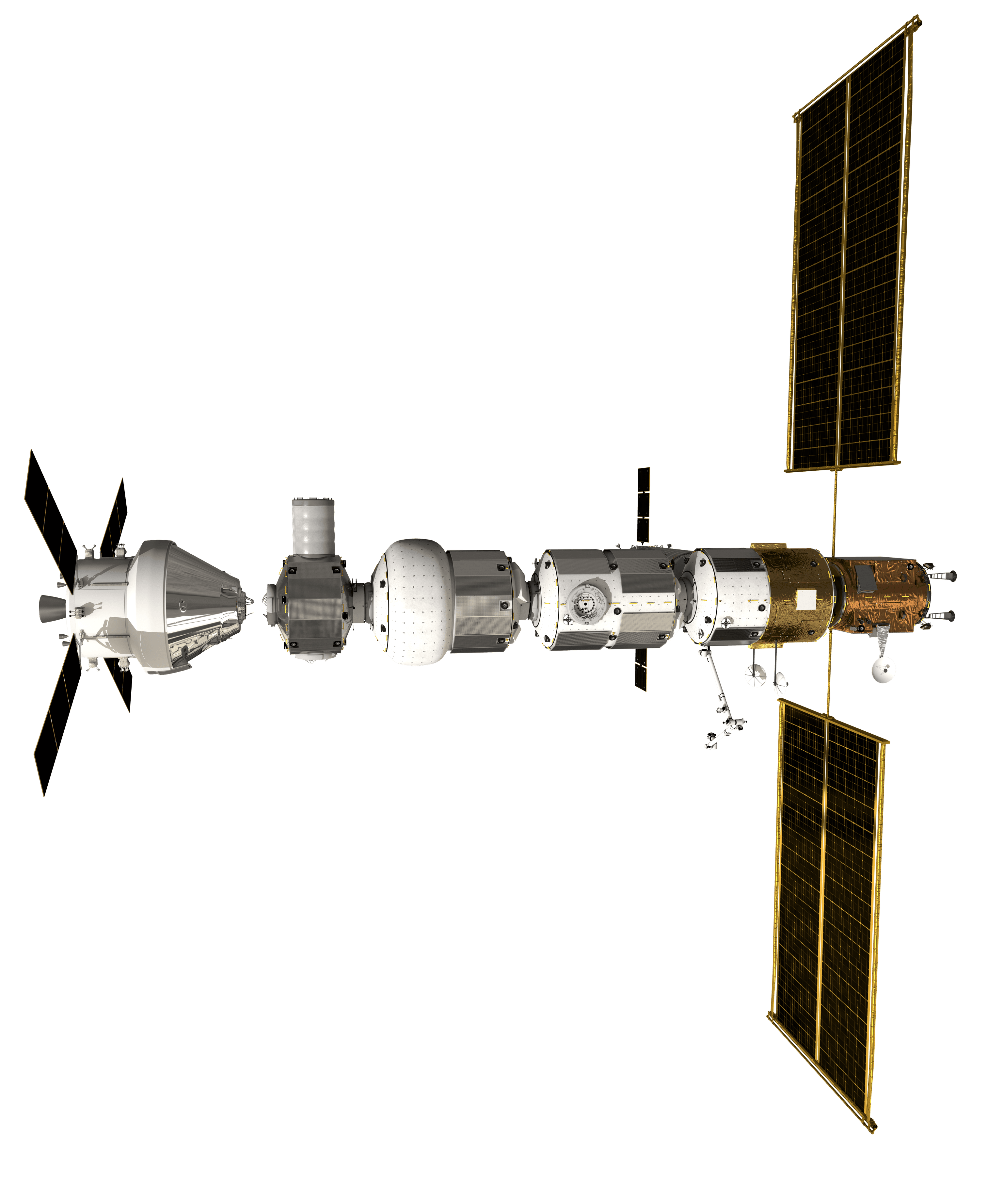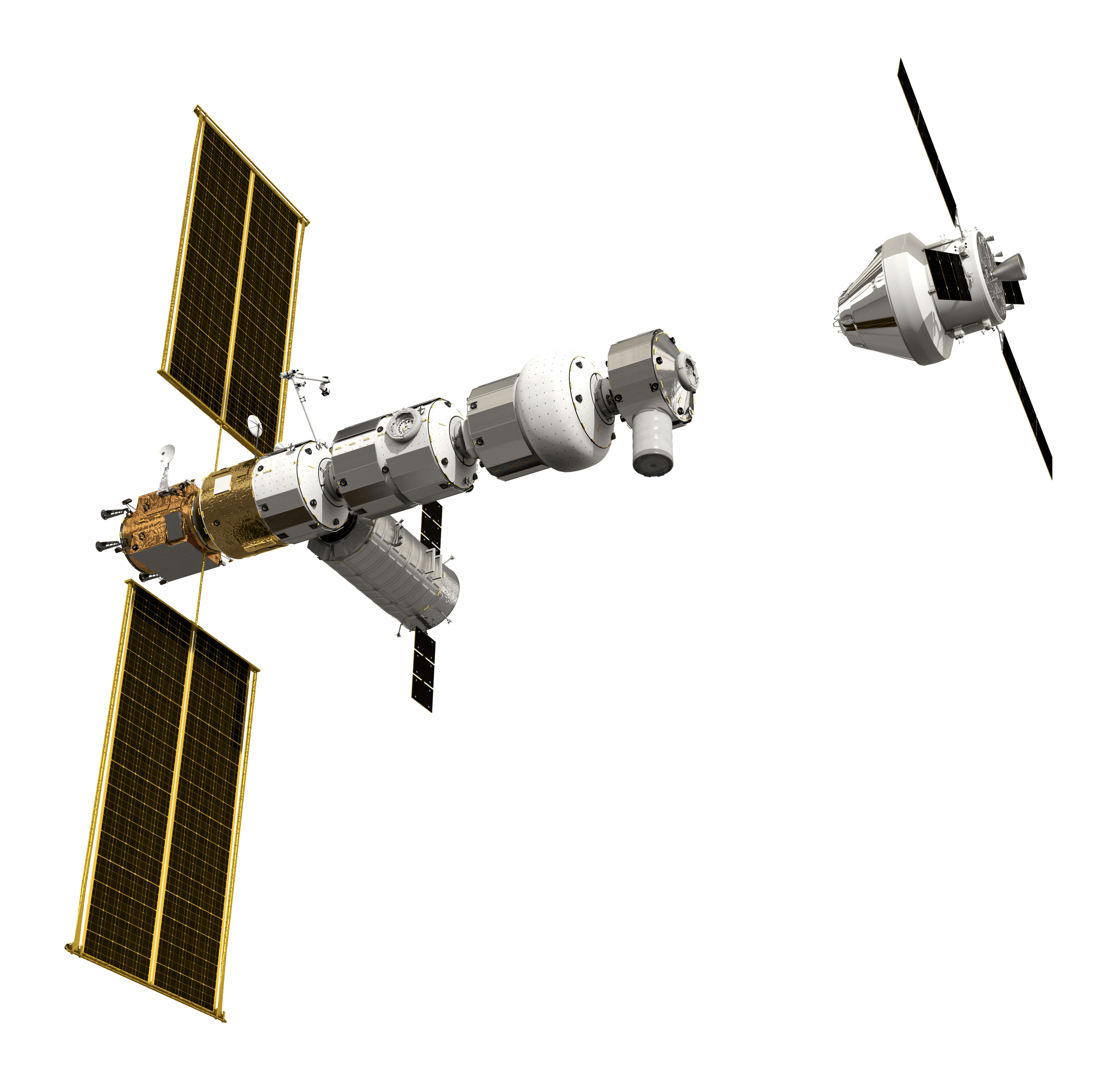Lunar Gateway
Spacecraft Mass: 10000 kg
Orbital Altitude: 32000 km NRHO (avg)
Launch Date: 2028
Delivered services / solutions / products:


Gateway will be the first modular space station to be both human-rated, and autonomously operating most of the time.
The International Habitation Module (I-HAB) will be an additional habitation module built by ESA in collaboration with Japan. On 14 October 2020, Thales Alenia Space announced that they had been selected by ESA to build the I-HAB module slated for launch in 2026. The module will also feature contributions from the other station partners, including a life support system from JAXA, avionics and software from NASA and robotics from the Canadian Space Agency (CSA).
The module is slated to launch in 2028 on the Artemis 4 mission as a co-manifested payload on the SLS Block 1B along with a crewed Orion spacecraft. The I-HAB would have a maximum launch mass of 10,000 kg and provide a habitable volume of 10 m3 (the gross pressurized volume is 35 m3) . In 2019, NASA proposed the addition of a second large U.S. habitation module (to be developed by U.S. industry) in order to increase the station's combined habitable volume to 125 m3.
Our responsibilities include:
System Engineering Structural Engineering Fatigue and Fracture Control Supply Chain Management Delivery of Mechanical Subsystems Designing a diverse array of electronic enclosures compliant with human spaceflight prerequisites.
The Lunar Gateway is the first planned extraterrestrial space station.
Solutions:
I-HAB Habitation Module
Electronic units
The Gateway is planned to be deployed in a highly elliptical seven-day near-rectilinear halo orbit (NRHO) around the Moon, which would bring the station within 1,500 km (930 mi) over the lunar north pole surface at closest approach and as far away as 70,000 km (43,000 mi) over the lunar south pole. Traveling to and from cislunar space (lunar orbit) is intended to develop the knowledge and experience necessary to venture beyond the Moon and into deep space.
It will be placed in lunar orbit and is intended to serve as a solar-powered communication hub, science laboratory, and short-term habitation module for government-agency astronauts, as well as a holding area for rovers and other robots. It is a multinational collaborative project involving four of the International Space Station partner agencies: NASA, European Space Agency (ESA), Japan Aerospace Exploration Agency (JAXA), and Canadian Space Agency (CSA). It is planned to be both the first space station beyond low Earth orbit and the first space station to orbit the Moon.
The project is expected to play a major role in NASA's Artemis program, after 2024. While the project is led by NASA, the Gateway is meant to be developed, serviced, and utilized in collaboration with the CSA, ESA, JAXA, and commercial partners. It will serve as the staging point for both robotic and crewed exploration of the lunar south pole and is the proposed staging point for NASA's Deep Space Transport concept for transport to Mars.

